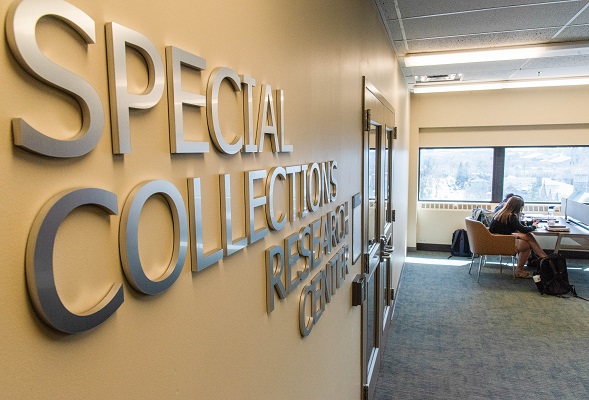Ethel Smyth Papers, 1910-1962 (majority within 1917-1942)
1 Linear Foot — 2 manuscript boxes
The Ethel Smyth Papers are comprised of five series. The series, Manuscripts, Print, Research Notes, Artwork, and Diaries, are arranged in two boxes. The bulk of the Manuscripts series consists of outgoing correspondence dated from 1910 to 1937, primarily addressed to recipients who were involved in the music community of the time. Most of the outgoing correspondence is addressed to Professor Donald Tovey, a Scottish composer and conductor and one of Smyth's mentors. This correspondence consists of 16 letters spanning more than 14 years and addresses various musical topics. Also represented in the outgoing correspondence are letters to composer and conductor Gordon Bryan; to Philip Heseltine (a.k.a. Peter Warlock) a composer and founder of the music serial The Sackbut regarding an article she wrote for the publication; and letters to Lady Constance Lytton, who was a friend of Smyth's in the Women's Suffrage Movement. Correspondence also includes a letter to Scottish conductor and student of Donald Tovey, Dr. Mary Grierson, remarking on the glorious first performance of Smyth's work, The Prison in February of 1931. Other correspondence consists of a letter from Lindsay Venn to Ethel Davidson regarding the disposition of Smyth's papers after her death. Also included in the Manuscripts series is the typescript of Lyrics to Smyth's composition, The Prison, based on the writing of Henry Brewster, who was strongly connected to Smyth. Finally, there is a fragment of several bars of music from the Concerto for Violin, Horn and Orchestra penned and autographed by Smyth. A fragment of a composition by Smyth's contemporary, Frederic H. Cowen is on the verso of this item. The Writings sub-series is made up of drafts of two typescripts. The first contains the first three chapters of A Fresh Start, Smyth's last autobiographical work, which was probably begun in 1941 but was never published. The second contains three drafts of An Eightieth Birthday, a speech given on BBC radio in 1938. These are heavily corrected in Smyth's hand. Finally, there is a single holograph sheet entitled Notes on "Mass in D" which seems to be jottings for program notes. The Print series consists of a program from the 1921 Queen's Hall Symphony performance of Smyth's "Love Duet" from her opera, The Wreckers. It also includes a pamphlet containing the lyrics of March of the Women, a piece Smyth wrote in support of the Women's Suffrage Movement. There are three newspaper clippings which discuss Smyth as a conductor, especially at the Bournemouth Music Festival, held in April of 1924. The Research Notes series contain two books of notes taken by Christopher Marie St. John for the definitive biography of Smyth. Both contain research notes and possibly notes from interviews with Smyth and members of her circle. The second of the notebooks is entitled "Wood on her Conducting / Beecham on Criticism" and contain commentary from two of Smyth's close acquaintances, Henry Wood and Thomas Beecham. The Artwork series consists of two pencil sketches of stage sets for Smyth's opera, "The Prison." The artist of these sketches is unidentified. Perhaps the most significant portion of this collection is the Diaries. These six volumes are in fragile condition and begin in 1917, continuing almost uninterrupted through 1942. The diaries are heavily annotated by Smyth herself, and she obviously used them in writing her autobiographical works. The dated entries present an excellent description of Smyth's life and include commentary on composition and performance of her music; her literary works; her health (in particular, her failing hearing) and travels; her beloved old English sheep dogs; World Wars I and II; the political climate of Ireland in the early 20th century; British royalty; and the lives of her many friends, including Empress Eugénie, Edith Somerville, Lady Ponsonby, Maurice Baring, Betty Balfour and Virgina Woolf. Throughout the diaries, Smyth has pasted in newspaper clippings, photography, pamphlets and other memorabilia. It is possible that Volume VI, which consists of family photographs, poetry by Ethel and her sister Mary, and other notes, is written in a hand which is not Smyth's.
